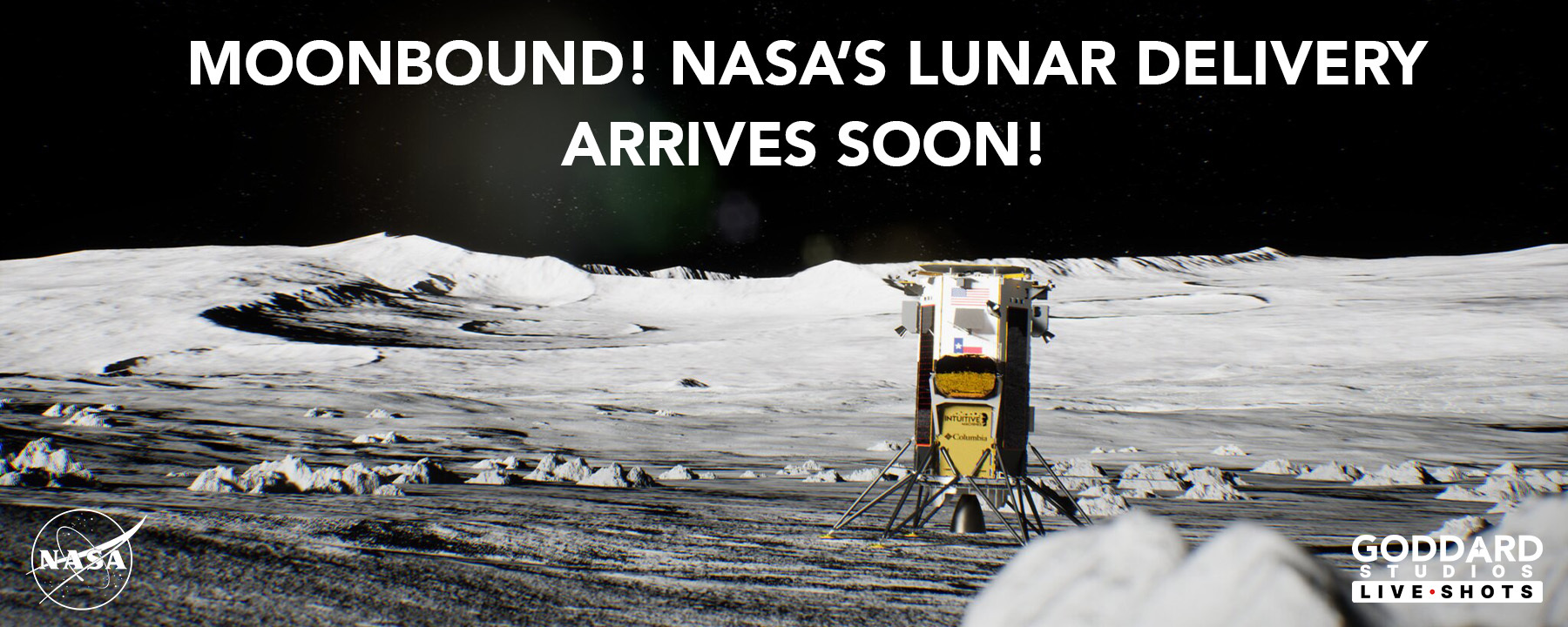Permanent Shadows on the Moon
As the Earth and Moon orbit around the Sun, there are places on the Moon that never receive direct sunlight. Most of these permanently shadowed regions are at the lunar poles. This animation approximates the permanently shadowned regions pertaining to the Moon's south pole by maintaining a maximum sun angle to the surface of 1.5 degrees. These permanently shadowed areas are of interest because they could hold water ice. (NOTE: South Pole Digital Elevation Maps [DEM] based on publically released JAXA/Selene data.)
This sample composite combines all the animation elements listed below to visually tell the story of permanent shadows on the Moon. The aquamarine areas highlight the permanently shadowed regions.
Zoom In: This animation begins with the full Moon in view and after one lunar cycle zooms in to the lunar south pole. (NOTE: The last frame of this animation matches the first frames of the "Bird's Eye View" and "Move to Tilted View".)
Bird's Eye View: With the camera looking straight down at the lunar south pole (Shackleton Crater is in the center of the screen) the light cycles one time around to show the full effect of shadows at the south pole. (NOTE: The first frame of this animation matches the last frame of "Zoom in" and the last frame matches the first frame of "Move to Tilted View".)

Matte layer highlighting permanent shadows for "Bird's Eye View" sequence.
Move to Tilted View: In this part of the animation, the camera changes perspective from a straight down bird's eye view of the lunar south pole to a more angled look of the same area. (NOTE: The first frame of this seqence matches the last frames of "Zoom In" and "Bird's Eye View".)
Tilted View: In this animation, the camera is parked, looking down at Shackleton Crater at an angle while the shadows cycle through a full 360 degree rotation.

Matte layer highlighting permanent shadows for "Tilted View" sequence.

Print resolution image of the lunar south pole showing Shackleton Crater in the center.

Another print resolution image with the camera tilted, showing Shackleton Crater in the center of the image.
For More Information
Credits
Please give credit for this item to:
NASA/Goddard Space Flight Center Scientific Visualization Studio. Digital Elevation Map (DEM) data of the lunar south pole provided by the JAXA/Selene.
-
Animators
-
Alex Kekesi
(Global Science and Technology, Inc.)
- Ernie Wright (UMBC)
- Marte Newcombe (Global Science and Technology, Inc.)
-
Alex Kekesi
(Global Science and Technology, Inc.)
-
Producer
- Andrew Freeberg (NASA/GSFC)
-
Scientists
- John Keller (NASA/GSFC)
- Richard Vondrak (NASA/GSFC)
- Tim McClanahan (NASA)
-
Project support
- James W. Williams (Global Science and Technology, Inc.)
- Tom Bridgman (Global Science and Technology, Inc.)
Missions
This page is related to the following missions:Series
This page can be found in the following series:Tapes
The media on this page originally appeared on the following tapes:-
LRO Pre-Launch Resource Tape
(ID: 2009030)
Tuesday, April 7, 2009 at 4:00AM
Produced by - Andy Acuna (Hughes STX)
Datasets used
-
[Clementine: HIRES]
ID: 175 -
750-nm Basemap [Clementine: UVVIS Camera]
ID: 545 -
DEM [KAGUYA: Laser Altimeter (LALT)]
ID: 546Formerly known as "SELENE".
See all pages that use this dataset -
ULCN 2005 (Unified Lunar Control Network 2005)
ID: 553The ULCN 2005 (Unified Lunar Control Network 2005) is a lunar control point network that precisely measured 272,931 pieces of data produced by the USGS using existing lunar imagery or data from the Clementine and other observations.
See all pages that use this dataset
Note: While we identify the data sets used on this page, we do not store any further details, nor the data sets themselves on our site.
Release date
This page was originally published on Tuesday, May 12, 2009.
This page was last updated on Sunday, January 5, 2025 at 10:01 PM EST.
